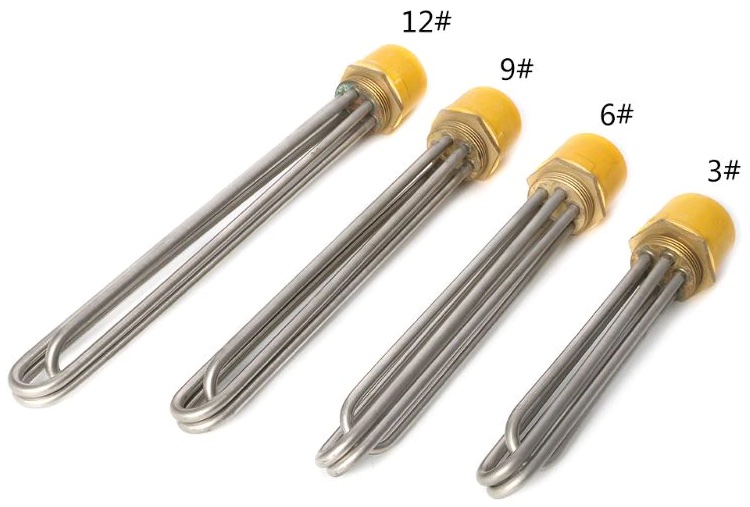A major downfall when it comes to elements are their ability to absorb moisture when not in use. This is as a result of the porous nature of the metal used to create the filament shell.
 Element storage
Element storage
When elements are received from suppliers it is imperative that we keeps these dry by all means. Store these in a sealed container. One could even go further and place silica gel sachets in these containers to absorb any possible moisture within. Inland this will not be
as significant a problem as will be the case in coastal areas, where humidity and air moisture levels are high.
Elements installed on site
Part of our handover and training requirements is that elements within tanks or inline heaters are to be switched on a minimum of 1 hr a week. The more they are used, the longer they will last.
In a common geyser or tank where water heating is done only by means of elements you will notice that these elements last for an extended period of time. The constant use thereof results in the elements “boiling off” moisture within and, in turn, keeping them dry. An element constantly used in this way will last anywhere between 2 to 4 years, whereas there is a very likely possibility that elements used only as backup for when the primary heat source is not working can become damaged within in couple of months.
An additional benefit to the regular switchover to elements on a site is that this affords the site based maintenance team the opportunity to identify problems on the backup heating, instead of realising during an emergency that both the heat pumps and elements don’t work.
 Element storage
When elements are received from suppliers it is imperative that we keeps these dry by all means. Store these in a sealed container. One could even go further and place silica gel sachets in these containers to absorb any possible moisture within. Inland this will not be
as significant a problem as will be the case in coastal areas, where humidity and air moisture levels are high.
Elements installed on site
Part of our handover and training requirements is that elements within tanks or inline heaters are to be switched on a minimum of 1 hr a week. The more they are used, the longer they will last.
In a common geyser or tank where water heating is done only by means of elements you will notice that these elements last for an extended period of time. The constant use thereof results in the elements “boiling off” moisture within and, in turn, keeping them dry. An element constantly used in this way will last anywhere between 2 to 4 years, whereas there is a very likely possibility that elements used only as backup for when the primary heat source is not working can become damaged within in couple of months.
An additional benefit to the regular switchover to elements on a site is that this affords the site based maintenance team the opportunity to identify problems on the backup heating, instead of realising during an emergency that both the heat pumps and elements don’t work.
Element storage
When elements are received from suppliers it is imperative that we keeps these dry by all means. Store these in a sealed container. One could even go further and place silica gel sachets in these containers to absorb any possible moisture within. Inland this will not be
as significant a problem as will be the case in coastal areas, where humidity and air moisture levels are high.
Elements installed on site
Part of our handover and training requirements is that elements within tanks or inline heaters are to be switched on a minimum of 1 hr a week. The more they are used, the longer they will last.
In a common geyser or tank where water heating is done only by means of elements you will notice that these elements last for an extended period of time. The constant use thereof results in the elements “boiling off” moisture within and, in turn, keeping them dry. An element constantly used in this way will last anywhere between 2 to 4 years, whereas there is a very likely possibility that elements used only as backup for when the primary heat source is not working can become damaged within in couple of months.
An additional benefit to the regular switchover to elements on a site is that this affords the site based maintenance team the opportunity to identify problems on the backup heating, instead of realising during an emergency that both the heat pumps and elements don’t work.


